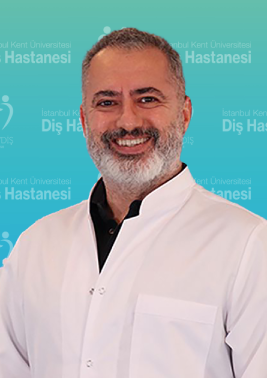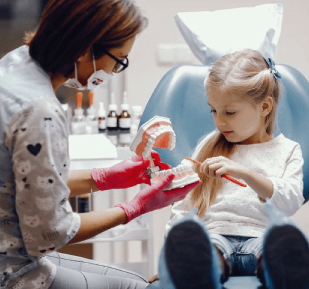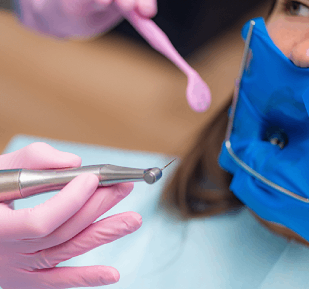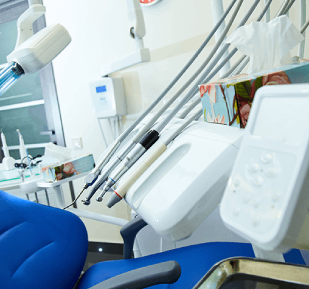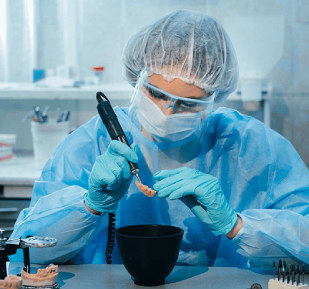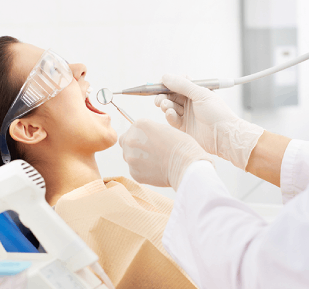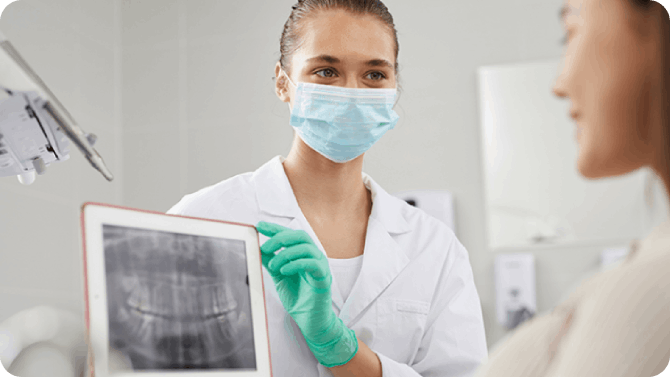
Oral Diagnosis And Radiology
Oral Diagnosis, Oral, Dental And Maxillofacial Radiology
It is the main branch of science in dentistry that focuses on the diagnosis and treatment planning of oral and dental diseases and systemic diseases that cause symptoms in the mouth. A successful dental treatment is possible only with an accurate diagnosis. Identifying all the problems in oral and non-oral dentistry, oral diagnostics helps to use scientific knowledge to determine the relationship between results and the correct treatment based on the results obtained. A good oral diagnosis is made with oral examination, intraoral examination and X-ray examination.
Not only tooth decay and inflamed gingiva appear in the mouth. As it is accepted all over the world, diseases of the jaw bones and joint, salivary glands, tongue and all soft tissues in the mouth are issues of dental practice. These structures and tissues cover a small area but form an anatomically complex structure. Many systemic diseases also show significant symptoms in the mouth. For example, in diabetes mellitus, periodontal diseases progress very quickly. Again, aphthae that appear frequently and in large numbers in the mouth can be the first symptoms of Behcet's disease. For these reasons, it was necessary to create a separate department related to the diagnosis and treatment planning of intraoral diseases, and Oral Diagnosis and Radiology took over this task.
Dental X-Rays
Dental radiographs, that is, dental X-rays, are our greatest help in diagnosing intraoral diseases - especially those related to hard tissue such as teeth and jawbones. The two most commonly used types of dental x-rays are periapical (small x-rays showing 2-3 teeth together) and panoramic X-rays (large x-rays that can show the entire lower and upper jaw teeth and jaw bones). Digital radiography devices, which are a computer-assisted technique, allow us to make color and light adjustments on the X-ray using an extremely low radiation dose, which makes it possible to make detailed evaluations. Additionally, Volumetric Tomography are other x-rays that may be requested from the patient to facilitate the diagnosis especially in implant applications and in the diagnosis of joint diseases.
Diagnosis And Treatment
Only 1/3 of the teeth structure can be seen in the mouth. We can easily see and diagnose the remaining 2/3, inflammation in the jawbone and impacted teeth. Indeed, a good diagnosis also allows doctors to make the right treatment planning. In this way, all the necessary treatment needs are diagnosed early and the occurance of larger problems in the future is prevented.
In the department of Oral Diagnosis and Radiology, your personal and medical data in the patient file is never shared with third parties in accordance with our privacy policy. In the department of Oral Diagnosis and Radiology, examinations of all patients are carried out in detail after the initial records are obtained. Then, one or more of the dental x-rays are taken in accordance with the treatment needs and the entire treatment planning is determined. In accordance with the treatment planning, our patients are referred to specialist physicians and their treatments are initiated.
For all your questions about the treatment plan and treatment duration in the oral diagnosis department, you can get detailed information and make an appointment by contacting our call center at 444 0 987.

